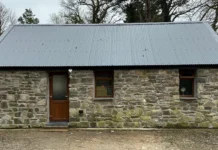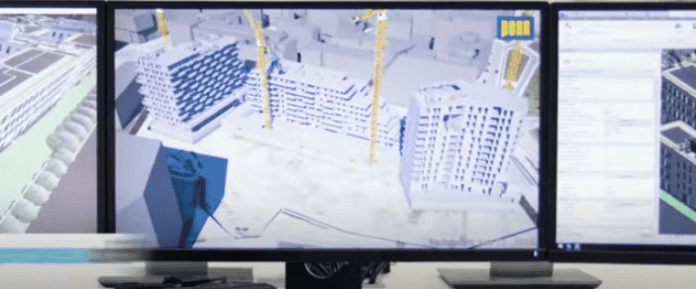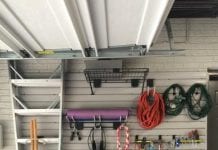Design for Manufacturing and Assembly (DfMA) focuses on reducing the time and costs of bringing a project to market. It aims to maximise the ease of production, simplify assembly and bring the project together during the early design phases of the project lifecycle.
Buildings can be designed and constructed more quickly, sustainably and efficiently, with building elements created primarily in a manufacturing environment rather than on-site construction – using less energy and carbon and creating less waste. It also offers greater safety and a more standard design and specification for new builds, retrofits and redevelopments.
Building Information Modelling (BIM) and modular drawings are elements of the construction process. These enable parts to be manufactured offsite to balance the building performance, quality, build time and cost.
How BIM supports DfMA
Creating a building that users and stakeholders are happy with at a cost and timeframe that fits can be complex. It is a process subject to many outside factors and unplanned events, which can derail the project, cause issues with information dissemination and lead to higher costs, project disruption and failed deadlines. Traditional methods have often led to poorly designed buildings achieved in longer timeframes and at a higher price than expected.
BIM for DfMA offers a solution that can prevent many common construction issues and lead to better buildings. Companies like The CAD Room use their expertise to deliver BIM outsourcing partnerships. This helps to provide cost-effective solutions for DfMA, surveying and BIM that support architects and construction professionals to deliver BIM-compliant building solutions.
BIM offers a way to design, plan and manage a build, ensuring that all stakeholders and trades have relevant, up-to-date information to hand. It can build a model that shows the building in situ and coordinates project timeframes with trades and deliverables to avoid issues and clashes that are commonplace in standard building methods. It can easily be adapted to account for changes in plans, and information is disseminated in real-time to keep the project on time and within budget. BIM can also help with the building layout, on-site visualisation and safety aspects and ongoing building handover and management.
Why is DfMA beneficial to the future of construction?
- Speed and Cost. Offsite building decreases assembly time due to standard assembly practices. Organised and repeatable assembly orders are more easily carried out offsite with parts in assembly order, thus reducing manufacturing cost and time.
- Test Ability. The BIM process can aid the early offsite solutions early in the project planning phase to deliver prototypes that can be tested extensively before the project progresses.
- Efficiency and Quality. Pre-fabricated elements offer greater consistency, as they are extensively quality tested and remedial works are addressed without affecting the on-site operations.
- Safety and Site Space. Many sites have complicated logistics and limited space, so handling much of the process offsite helps manage the demands on the site. This leads to a safer working environment, where many of the health and safety aspects can be controlled more effectively within the factory environment.
- Volume Needs and Resource Availability. Repetitive structural elements can benefit from BfMA (Building for Manufacturing and Assembly), limit the often significant on-site build time, and relieve the issues of skill shortages, with less labour required on-site than traditional methods. Delivery deadlines are more manageable through dedicated production facilities.
- Simplified Manufacturing Activities. DfMA simplifies the manufacturing process, using modules in the product design that optimises material production and supply, with prefabrication being said to be a top method to achieve sustainable builds.
As long as the solution starts by understanding the result, DfMA brings many advantages to construction companies, seeing how we design, remodel and build change. BIM, DfMA, and BfMA solutions are how architects, MEP engineers, structural engineers and general contractors can build our future homes, schools, and commercial units wiser and more sustainably in the future.
Help keep news FREE for our readers
Supporting your local community newspaper/online news outlet is crucial now more than ever. If you believe in independent journalism, then consider making a valuable contribution by making a one-time or monthly donation. We operate in rural areas where providing unbiased news can be challenging. Read More About Supporting The West Wales Chronicle

























